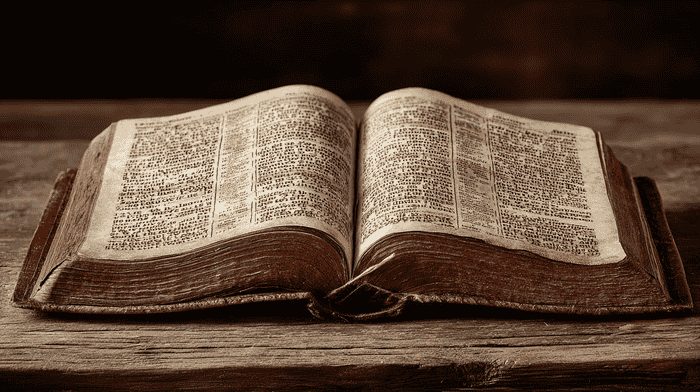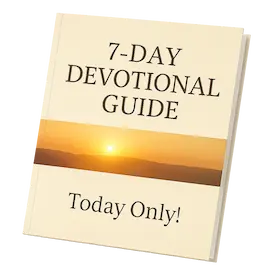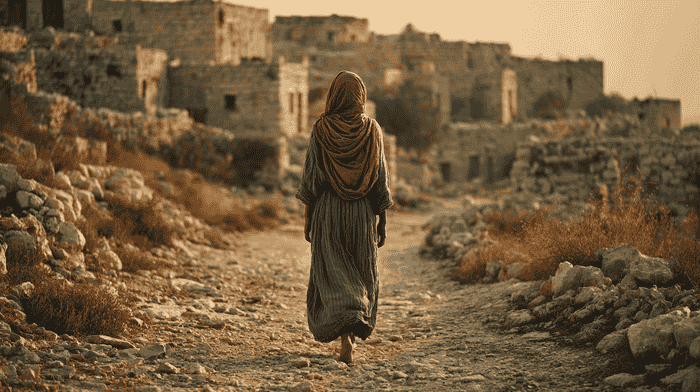What Do We Mean by “Version” of the Bible?
Is there only one Bible? Well, no.
When we look at the multitudes of Scriptures out there, here’s where they can differ:
- In translation (language conversion), like the New Revised Standard Version Catholic Edition (NRSVCE), the King James Version (KJV), or the New International Version (NIV), to name just a few.
- In the edition (revised text): Such as the Revised Standard Version (RSV) and the New Revised Standard Version (NRSV).
- In what is considered canon: Catholic, Protestant, and Orthodox Bibles include different books.
- In their purpose: Study Bibles, children's Bibles, devotional editions.
So, when asking how many different versions of the Bible are there?, we have to clarify if we mean translations, denominations' canons, or printed editions.
How Many Translations of the Bible Are There?
The number of Bible translations out there is honestly incredible. As of 2024, Wycliffe Global Alliance reports:
- The entire Bible has been translated into 756 languages.
- The New Testament is available in 1,726 languages.
- Portions of Scripture exist in over 3,756 languages.
That’s thousands of communities hearing God’s Word in their own tongue, some for the first time in history. And if we’re just talking about English? There are over 450 different Bible versions to choose from.
So when someone asks, “How many Bible translations are there?”—the real answer is: way more than you might think. And each one reflects a different effort to make the Bible speak clearly to hearts across time, place, and language.
Why So Many English Versions?
A big reason is that language evolves. The English we speak today is very different from the English of 1611, when the King James Version was published. New versions, like the Christian Standard Bible (CSB) from 2017, aim to keep Scripture readable for modern readers.
Then there’s the audience. Some Bibles are made with kids in mind, like the International Children’s Bible (ICB). Others are written for casual readers, like The Message (MSG). Scholars and serious students of the Word often turn to more academic versions, like the New Revised Standard Version Catholic Edition (NRSVCE).
Translation philosophy also plays a big part. Some versions aim to stick as much as possible to the original languages (word-for-word), such as the English Standard Version (ESV) or New American Standard Bible (NASB).
Others want to express the meaning more naturally (thought-for-thought), like the New International Version (NIV) or New Living Translation (NLT).
So when people ask, “How many English Bible versions are there?”—it depends on what counts as a version.

Get Closer to God Today
4.9
Average Rating
|Over 5 Million Downloads
Denominational Differences: How Many Christian Bibles Are There?
It might sound strange at first, but not all Christians read the exact same Bible. The main difference? It’s about which books are included.
If you grew up Protestant, you’re probably familiar with the 66-book version—that’s the Old and New Testaments. Catholics have a few more: seven extra books called the Deuterocanonicals, which bring their total to 73. And in the Eastern Orthodox Church, the number gets even higher, sometimes 76 or more, depending on the tradition.
So when someone asks, “How many Christian Bibles are there?”—it’s not a trick question. The answer depends on which books each tradition considers part of God’s Word. These differences go way back, shaped by centuries of history, councils, and theology.
That’s why it’s more accurate to talk about different kinds of Bibles. What’s in your Bible usually says something about the faith tradition you belong to—and how that tradition hears God speak.
What Does the Bible Say About Itself?
With so many translations, editions, and traditions, it’s easy to get caught up in the differences. But at the heart of it all, the Bible says something pretty clear about itself.
In 2 Timothy 3:16 (NRSVCE), we’re told, “All Scripture is inspired by God and is useful for teaching, for reproof, for correction, and for training in righteousness.” That’s a purpose statement: the Bible isn’t meant to sit on a shelf. It’s meant to shape lives.
Isaiah 40:8 (NRSVCE) adds, “The grass withers, the flower fades; but the word of our God will stand forever.” In other words, cultures change, languages evolve, and translations multiply, but the message stays.
So no matter how many versions of the Bible are out there, Christians come back to the same core belief: that Scripture carries the voice of God, and that voice endures.
Popular Bible Versions in English: A Quick Look
If you’ve ever stood in the Bible section of a bookstore or browsed online, you’ve probably thought, “Why are there so many English Bibles?” The truth is, there are over 450 versions, and each one was created with a different goal in mind.
- The King James Version (KJV) was published back in 1611, and it’s famous for its beautiful, old-school language.
- The New International Version (NIV) is super popular because it’s clear and easy to follow while staying true to the text.
- The New Revised Standard Version (NRSV)—and its Catholic counterpart, the NRSVCE—is known for being scholarly and inclusive.
- The English Standard Version (ESV) sticks close to the original wording but still reads smoothly.
- The New Living Translation (NLT) is super readable and down-to-earth.
- The Message (MSG) paraphrases the Bible in a way that feels like a modern conversation.
With so many options, it’s really about finding one that speaks to you.

Get Closer to God Today
4.9
Average Rating
|Over 5 Million Downloads
Theological Concerns: Do Versions Change Meaning?
A lot of people wonder, “With so many versions out there, do they all say the same thing?” The truth is yes and no.
The heart of the message stays the same, but different translations bring out different tones or layers of meaning. It’s not that one is right and the other is wrong—they’re just speaking to us in different ways.
Take John 1:1. In the NRSVCE, it says, “In the beginning was the Word, and the Word was with God, and the Word was God.” It’s classic, elegant, and very close to the original Greek.
But then read The Message version: “The Word was first, the Word present to God, God present to the Word.” It’s more relaxed, more like a conversation.
Same core truth, different flavor. And that’s the point: Scripture doesn’t change, but how we hear it can. And that’s a gift, not a problem.
Criticisms and Controversies
Plenty of people have questions, and even concerns, about all the different versions of the Bible out there.
Some wonder if certain translations go too far, especially when they use gender-neutral language or leave out verses found in older editions. Others worry about theological bias, whether a version leans more Calvinist, more Arminian, or something else entirely.
And honestly, those are fair things to ask. But most well-known translations are put together by teams of scholars from different backgrounds who genuinely want to honor Scripture.
They may not all agree on every detail, but the heart is usually in the right place: getting God’s Word into people’s hands, clearly and faithfully.
What About Bible Revisions?
When someone asks how many revisions of the Bible there are, they’re usually talking about updates to familiar translations, not entirely new ones.
The NIV you pick up today (from 2011) isn’t identical to the 1984 or 1978 editions. The same goes for the NRSV, which got an updated version in 2021.
These changes are about fine-tuning the language, improving accuracy based on new manuscript findings, and making the text easier to read for today’s readers.
Get Closer to God Today
4.9
Average Rating
|Over 5 Million Downloads
Are There Differences Between Protestant and Catholic Versions?
Yes, there are real differences between Protestant and Catholic Bibles, and they’re not just about wording.
Catholic Bibles include several books you won’t find in most Protestant versions: Tobit, Judith, Wisdom, Sirach, Baruch, and 1 & 2 Maccabees. These are called the Deuterocanonical books.
Protestants typically group them as the “Apocrypha” or leave them out entirely. The NRSV Catholic Edition (NRSVCE) includes them and is respected across traditions.
So when people ask how many Christian Bibles there are, these differences in canon are an important part of the answer.
Multiple Theories Behind So Many Bibles
There are a few different reasons scholars believe we have so many Bible versions today, and it’s not just about language.
First, early biblical manuscripts aren’t identical, so textual critics work hard to figure out what the original wording likely was. Then there’s the question of how to translate: should it be word-for-word or more thought-for-thought?
Theological views also play a role: some versions reflect Catholic tradition, others lean Evangelical or Calvinist.
And let’s be honest, publishers sometimes create new versions to reach specific audiences or update older ones for modern readers.
But Are All Bibles Equally Trustworthy?
That depends.
Some versions are translated by teams of scholars who carefully work from the oldest available manuscripts. Others are paraphrased by a single writer or lean heavily into a specific theological angle.
So it’s worth asking: who did the translating, and what was their goal? Was it accuracy? Readability? A specific doctrine? Something like the NRSVCE is a solid pick because it’s respected by both Catholics and Protestants, and it’s grounded in serious scholarship.
In short, no, not all Bibles are equal. And that’s okay, as long as you know what you’re reading.
Get Closer to God Today
4.9
Average Rating
|Over 5 Million Downloads
How Many Bibles Are There in the World?
Wycliffe estimates that over 5 billion copies of the Bible have been printed or distributed. So, when asking how many Bibles are there in total, the answer spans languages, nations, and generations.
Final Thoughts
The Bible has been translated into more than 3,600 languages, with the full text available in 756 of them. That’s incredible reach. And in English alone? There are over 450 different versions.
On top of that, Christian traditions don’t all use the same collection of books—Protestant Bibles have 66, Catholic ones include 73, and Eastern Orthodox versions go even higher, depending on the branch.
Bibles are not the same, and that’s part of what makes them so helpful.
Some try to stick as closely as possible to the original languages, aiming for precision even if the phrasing feels a bit formal. Others are written to sound more natural and speak to the way we talk today, making the message easier to grasp.
Whatever your background, there’s probably a version that speaks your language—literally and spiritually.
Yet one thing stays the same: the Bible is the story of God reaching out to humanity. It teaches, challenges, and comforts. It’s not about finding the “best” version—it’s about finding one you’ll actually read and let shape your life.
If you’re new to the faith, the NIV or NLT are great places to start. Want to go deeper? Try the NRSVCE or ESV. Curious about tradition? The KJV or Douay-Rheims can connect you to centuries of Christian history.
Whatever Bible you choose, let it speak. Let it guide. Psalm 119:105 (NRSVCE) says, “Your word is a lamp to my feet and a light to my path.” That’s the heart of it. The goal isn’t to master every translation, but to be transformed by what they all point to: the living God.
Explore More
Still unsure which Bible version is right for you? The Bible Chat App can help. It breaks down translations, explains the differences, and walks with you as you grow in your faith: one verse, one question, one step at a time.
Get Closer to God Today
4.9
Average Rating
|Over 5 Million Downloads
References
- The Holy Bible, New Revised Standard Version Catholic Edition (NRSVCE). 1996. Ignatius Press.
- Wycliffe Global Alliance. (2024). 2024 Global Scripture Access.
- GotQuestions.org. Which is the best Bible translation?
- Desiring God. How Many Bible Versions Should I Read?
Image Sources: Midjourney.com










